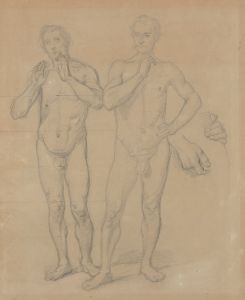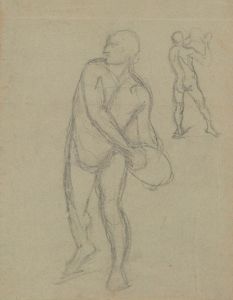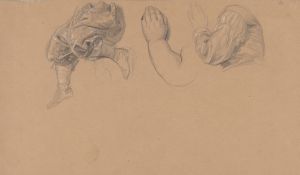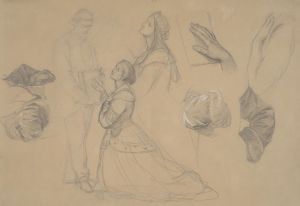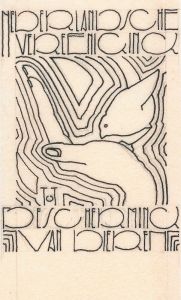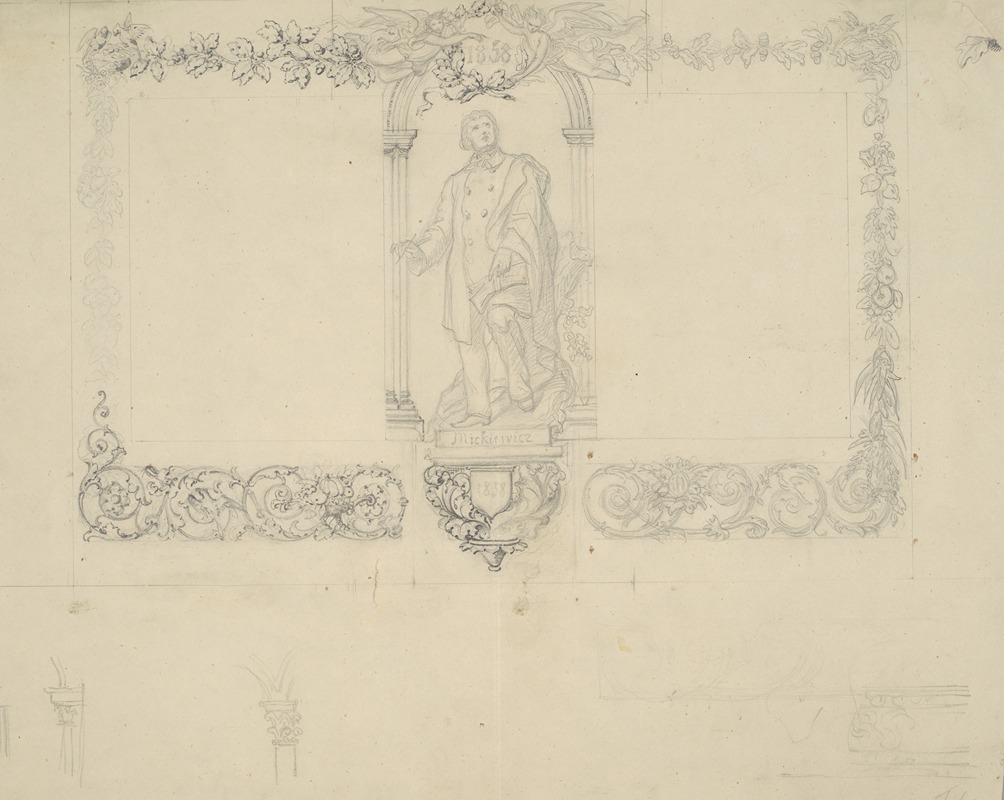
Projekt winiety dla wydawnicwtwa
A hand-painted replica of Józef Simmler’s masterpiece Projekt winiety dla wydawnicwtwa, meticulously crafted by professional artists to capture the true essence of the original. Each piece is created with museum-quality canvas and rare mineral pigments, carefully painted by experienced artists with delicate brushstrokes and rich, layered colors to perfectly recreate the texture of the original artwork. Unlike machine-printed reproductions, this hand-painted version brings the painting to life, infused with the artist’s emotions and skill in every stroke. Whether for personal collection or home decoration, it instantly elevates the artistic atmosphere of any space.
Józef Simmler, a notable Polish painter of the 19th century, is recognized for his contributions to the Romantic movement in Poland. His work, "Projekt winiety dla wydawnictwa," which translates to "Design for a Publishing House Vignette," is one of his lesser-known pieces. Simmler was born in 1823 in Warsaw and studied art in various European cities, including Dresden, Munich, and Paris, which significantly influenced his artistic style. He is best known for his historical and portrait paintings, which often reflect the Romantic era's emphasis on emotion and national identity.
"Projekt winiety dla wydawnictwa" is a design piece rather than a traditional painting, showcasing Simmler's versatility as an artist. The term "winieta" refers to a vignette, a decorative design or illustration used in books, often on the title page or at the beginning of chapters. Such designs were popular in the 19th century as they added an artistic touch to printed materials, enhancing their aesthetic appeal and making them more attractive to readers.
Simmler's design work for a publishing house would have involved creating intricate and detailed illustrations that could be reproduced in print. This task required not only artistic skill but also an understanding of the printing processes of the time. The design would need to be clear and detailed enough to withstand the reproduction process, which often involved engraving or lithography.
While specific details about the "Projekt winiety dla wydawnictwa" are scarce, it is likely that Simmler's work in this area reflected the broader trends in book design during the 19th century. This period saw a growing interest in the visual aspects of books, with publishers seeking to distinguish their products in an increasingly competitive market. Artists like Simmler played a crucial role in this process, using their skills to create visually appealing designs that complemented the written content.
Simmler's broader body of work is characterized by its attention to detail and emotional depth. His historical paintings often depict significant events in Polish history, rendered with a focus on dramatic expression and meticulous detail. This same attention to detail would have been essential in his vignette designs, ensuring that even small illustrations conveyed the desired aesthetic and thematic qualities.
In addition to his artistic achievements, Simmler was an influential figure in the Polish art community. He was a member of the Society for the Encouragement of Fine Arts in Warsaw and contributed to the development of art education in Poland. His legacy is reflected in the continued appreciation of his work, both in Poland and internationally.
Overall, while "Projekt winiety dla wydawnictwa" may not be as widely recognized as some of Simmler's other works, it represents an important aspect of his artistic output and the broader cultural context of 19th-century Poland. Through his vignette designs, Simmler contributed to the rich tradition of book illustration, combining artistic creativity with the practical demands of the publishing industry.






